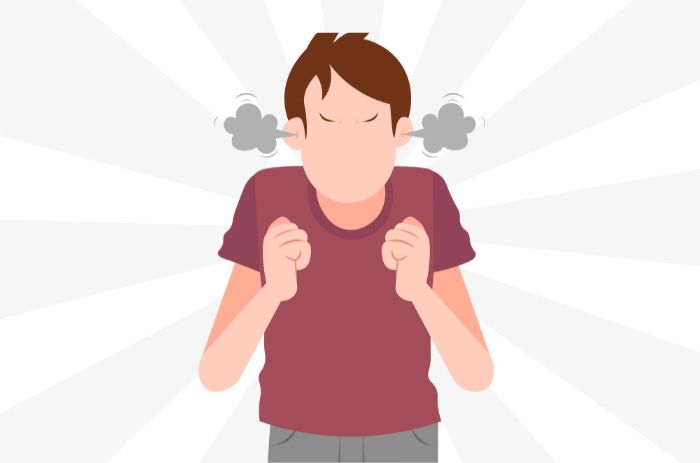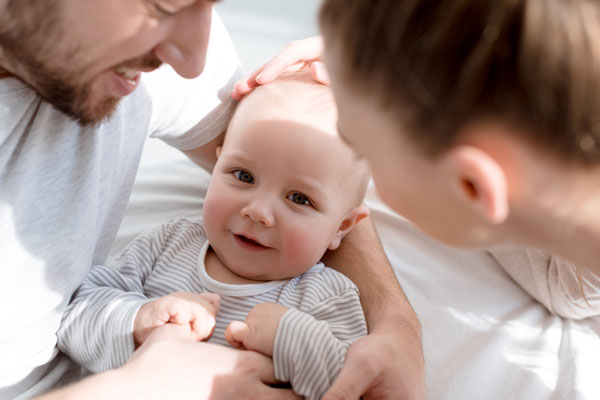Teens that consistently disobey authority figures, steal from stores, and engage in other forms of lawless activities exhibit antisocial behavior. Aggression, bullying, vandalism, theft, substance misuse, and criminal behavior are some ways this might appear. Addressing how to stop antisocial behavior and its root causes is crucial in fostering a safer and more harmonious environment for these young individuals.
Teens who act inappropriately are at risk for several negative outcomes, including strained personal relationships, poor school performance, and perhaps legal trouble. While not all youths who act out in defiance of authority or against established norms suffer from an antisocial personality disorder, the harmful effects of their actions on themselves and others should not be discounted.

Importance of understanding the causes of antisocial behavior and risk factors
There are several reasons why it is vital to gain an understanding of the elements that can lead to antisocial conduct in teenagers:
Prevention: It is possible to lessen the likelihood of antisocial behavior arising by addressing its root causes and risk factors. This can include helping the adolescent and their family through early intervention, education, and support.
Effective intervention: Understanding the root of antisocial conduct can also guide efficient treatment plans. If, for instance, you suspect that family dysfunction plays a role, family counseling could be a helpful strategy.
Reduced stigma: The stigma attached to antisocial behavior can be lessened if people have a better grasp of the various causes and contributing factors. It can assist those around you to understand that your behavior is the consequence of a web of influences, including your genes, your upbringing, and your social group.
Improved outcomes: Individuals who engage in antisocial conduct may be able to improve their results, both in terms of eliminating harmful behaviors and enhancing their general well-being, by addressing the underlying causes and risk factors.
Individuals who engage in antisocial conduct may be able to improve their results by eliminating harmful behaviors and enhancing their general well-being by addressing the underlying causes and risk factors.
1. Causes of Antisocial Behavior in Teenagers
i. Biological factors
Growing research suggests that biological factors contribute to the emergence of antisocial conduct in adolescents. Some of the most important biological elements that have been suggested as causes are as follows:
Genetics: Antisocial tendencies may have a genetic component, as revealed by studies. Research suggests that up to half of the variation in antisocial behavior can be attributed to inherited characteristics, with offspring of parents with antisocial tendencies being at a higher risk of developing such traits themselves.
Formation of the Mind: Imaging studies of the brain have revealed abnormalities in the structure and function of the brains of people exhibiting antisocial conduct, namely in regions involved in emotional processing and decision-making. Individuals with antisocial conduct, for instance, have been found to have decreased activity in the prefrontal cortex, which is involved in decision-making and impulse control.
Hormones like testosterone and cortisol have been linked to the emergence of antisocial tendencies in humans. Testosterone levels correlate positively with aggression, while cortisol (a stress hormone) levels correlate negatively with empathy and positively with risk-taking.
Although biological variables may play a role in the emergence of antisocial conduct, they are not causal. Factors in the natural and social environments also play a significant effect.
ii. Environmental factors
Adverse environmental experiences are a significant risk factor for the emergence of antisocial conduct in teenagers. Some of the most important environmental elements are as follows:
1. Adolescents who are raised in homes where there is neglect, abuse, or erratic punishment are more likely to engage in antisocial conduct as adults. Neglect or lack of supervision, as well as physical, emotional, or sexual abuse, fall into this category.
2. Adolescents are more likely to engage in antisocial behavior if they are exposed to violence, both at home and in their communities. Exposure to violence can dull the senses and normalize the use of force as a solution to conflict.
3. Adolescents who hang out with or are pressured into engaging in delinquent behavior are more likely to adopt those behaviors themselves. Some examples of such actions are substance abuse, vandalism, and stealing.
4. Factors at play in the adolescent’s school and community include academic failure, disengagement from school, and a lack of opportunity for constructive community involvement. Schools with a lot of disciplinary issues or few extracurricular options, for instance, may encourage students to act in antisocial ways.
5. Adolescents’ aggression and antisocial conduct may be influenced by their exposure to media depictions of violence and conflict, such as in films, television shows, video games, and online social networks.
It’s vital to remember that these external influences can combine with internal biological variables to foster antisocial behavior. Some adolescents who engage in antisocial conduct may not have experienced any of these environmental elements, and not all adolescents who experience these environmental factors go on to develop antisocial behavior.
2. Risk Factors for Antisocial Behavior in Teenagers
Teenage antisocial behavior is strongly associated with age and gender. This is how they can help:
Age: The prevalence of antisocial behavior is highest throughout the teenage years and decreases during the early adult years. Adolescent brains undergo significant changes, and so do their social environments; for example, adolescents see a rise in autonomy and peer influence as they age.
Furthermore, there is an increased chance of persistent and severe antisocial conduct in adulthood when antisocial behavior begins at a young age (before the age of 12).
Gender: Adolescence is a time when the gender disparity between males and females in antisocial conduct widens. Socialization mechanisms that promote guys to be more aggressive and autonomous may contribute, as may biological differences in aggression and risk-taking behavior. But maybe as a result of shifting societal norms and roles, there has been a shrinking gender disparity in antisocial conduct in recent years.
The development of antisocial conduct can be influenced by a wide variety of circumstances, including but not limited to age and gender. Furthermore, not all teens of a particular age or gender engage in antisocial behavior, and some teenagers who do engage in antisocial behavior may not meet these demographic patterns. When trying to identify the causes of antisocial conduct in adolescents, it is crucial to take a holistic and person-centered approach.
i. Low socioeconomic status
Teen antisocial conduct is also linked to low SES. Low SES can cause antisocial conduct in these ways:
Low SES adolescents may have restricted access to excellent education, healthcare, and secure housing. Stress and uncertainty can cause despondency, rage, and frustration.
Violence and crime: Living in low-SES neighborhoods might normalize and encourage antisocial conduct among adolescents. They are also more likely to witness or experience traumatic events like domestic abuse or neighborhood shootings, which can lead to mental health and behavioral concerns.
Family stress and dysfunction: Financial difficulty, marital strife, and parental substance misuse are common in low-SES families. Negative parenting and reduced supervision can lead to antisocial conduct.
Limited possibilities for constructive socialization: Low-SES adolescents may have fewer extracurricular activities, sports teams, and mentorship programs. Positive role models, social support, and a sense of belonging can prevent antisocial conduct.
These characteristics and other risk factors can interact to cause antisocial conduct. Antisocial conduct is not limited to low-SES teens. Understanding teen antisocial behavior risk factors must be broad and individualized.
ii. Poor academic performance
Another potential risk factor for antisocial conduct in adolescents is academic underachievement. Poor academic performance has been linked to antisocial behavior in the following ways:
Academically struggling adolescents are more likely to experience frustration and disengagement from school, which can lead to depression and indifference. This can lead to a loss of interest in positive activities and a diminished sense of personal accountability, both of which can facilitate antisocial behavior.
Isolation and loneliness can be exacerbated by the social rejection that might result from poor academic performance among classmates. If adolescent feels rejected by their peers, there is a higher likelihood that they may seek out friendships with other antisocial teens.
Opportunities for higher education and professional advancement may be more limited for low-achieving adolescents. As a result, one’s likelihood of participating in antisocial behavior rises, as do sentiments of pessimism and disinterest in one’s own future.
Adolescents who struggle in the classroom may receive negative labels from teachers, classmates, and even themselves. One’s sense of value and propensity to engage in risky behaviors might both suffer from the effects of these derogatory labels.
iii. Substance abuse
Adolescent substance misuse has been shown to significantly increase antisocial tendencies. Substance misuse can influence antisocial conduct in the following ways:
Impaired judgment: Addiction can cloud one’s thinking, making it easier to act recklessly and without thinking things through. Theft, vandalism, and violence are all forms of criminal behavior that fall within this category.
Increased aggression: Substance misuse has been linked to an increase in both verbal and physical hostility against others. Conflict with friends, family, and adults in power is a possible outcome.
Peer influence: Adolescent substance abusers may have more in common with their antisocial peers because of peer pressure. Antisocial behavior can be normalized in the presence of these peers, who may also promote drug or alcohol usage.
Criminal behavior: Increased participation in criminal activities, including drug dealing, theft, and prostitution, has been associated to substance dependence. There is a higher likelihood of bad outcomes, including arrest and incarceration, for adolescents who partake in these behaviors.
It’s crucial to remember that not all antisocial teens are also heavy drinkers or drug users and that not all heavy drinkers or drug users are necessarily antisocial. However, substance misuse is strongly linked to antisocial behavior, making it an integral aspect of adolescent antisocial behavior prevention and treatment.
iv. Mental health issues
Antisocial behavior in adolescents is often associated with mental health problems. Some of the ways in which mental illness might foster antisocial conduct are listed below.
Impulsivity: Psychological disorders such as attention deficit hyperactivity disorder, conduct disorder, and oppositional defiant disorder have been linked to impulsivity, which in turn can lead to unsafe and impulsive actions. This may involve illegal actions like stealing, vandalizing, or abusing substances.
Low self-esteem: Feelings of worthlessness, hopelessness, and apathy can stem from mental health concerns such as depression, anxiety, and low self-esteem. As a result, they may feel less accountable for their actions and less motivated to avoid negative consequences, both of which might facilitate antisocial conduct.
Difficulty regulating emotions: Emotional dysregulation is a symptom of a number of mental health conditions, including bipolar illness, borderline personality disorder, and disruptive mood dysregulation disorder. This can cause outbursts of anger, both verbal and physical, and endanger relationships with others.
Substance abuse: As we’ve seen, antisocial behavior is tightly linked to substance misuse, and mental health concerns can raise the risk of both.
Not all teenagers with mental health concerns participate in antisocial conduct, and it is important to remember that these disorders can be complicated and varied. Treating and avoiding antisocial conduct in adolescents, however, requires attention to mental health issues.
Treatments that have been shown to be effective often combine elements of several different approaches. When mental health disorders are recognized and treated early on, they can be mitigated before they lead to more severe consequences, such as antisocial conduct.
v. Lack of parental supervision and support
Another significant risk factor for antisocial adolescent behavior is a lack of parental supervision and support. Some of the ways in which this can foster the growth of antisocial conduct are listed below.
Lack of guidance: Adolescents who do not have the advice and support of their parents may not learn the skills they need to make good decisions on their own. This can make it more challenging for them to avoid dangerous or antisocial behavior when pressured to do so by their peers.
Lack of positive reinforcement: Adolescents who do not have the support of their parents may not be rewarded for their positive actions, such as doing well in school, helping others, or following the rules. As a result, one may feel less inclined to help others and more likely to act in an antisocial manner.
Exposure to negative influences: Negative peer influences Adolescents who do not have positive adult role models in their lives may be more likely to engage in risky behaviors themselves. This can make them more likely to act in an antisocial manner.
Inconsistent discipline: Adolescents who are not under constant adult supervision may not receive consistent discipline for their actions. This can make it harder for kids to understand what is expected of them and to develop good habits.
It’s vital to remember that not all kids who grow up without parental guidance and assistance end up being antisocial. However, this risk factor must be addressed in order to effectively prevent and cure antisocial behavior in adolescents. Parenting courses, family therapy, and community-based programs that reward helpful actions are all possibilities for effective solutions. Antisocial behavior and other issues can be mitigated if they are recognized and addressed early on.
vi. History of trauma or abuse
One of the most significant risk factors for antisocial conduct in adolescents is a history of trauma or abuse. Some of the ways in which trauma or abuse can lead to antisocial conduct are as follows:
Psychological distress: Adolescents who have been the victims of abuse or trauma may be at a higher risk for developing psychological discomfort such as sadness, anxiety, and PTSD. A diminished sense of duty and a lack of drive can facilitate antisocial behavior when someone is experiencing this kind of emotional pain.
Difficulty regulating emotions: Difficulty in controlling one’s emotions is a common symptom of trauma and abuse survivors. This can cause outbursts of anger, both verbal and physical, and endanger relationships with others.
Negative coping mechanisms: Adolescents who have been through traumatic experiences or abuse may turn to destructive coping methods like substance misuse or self-harm. Antisocial tendencies may increase in those who rely on destructive coping techniques.
Social isolation: Adolescents who have been abused or neglected may have difficulty relating to others their own age and may feel alone as a result. Loneliness and hopelessness, brought on by social isolation, might enhance the likelihood that an individual will behave in an antisocial manner.
It’s vital to remember that not all abused or traumatized teens act in a criminal manner. When trauma and abuse are recognized and addressed early on, they can be treated before they cause more severe problems, such as antisocial behavior.
How to stop antisocial behavior
Several tactics and initiatives can be applied to encourage early intervention, prevention, and positive development when dealing with the problem of antisocial behavior in adolescents. Here are some methods that have shown promise:
i. Preventive measures and early intervention:
Screening and assessment: Establish routine screening techniques to detect potentially antisocial adolescents. The sooner a problem is recognized, the sooner it may be addressed and helped.
Mental health services: Offer extensive and easily accessible mental health services in local schools and communities. Counseling, therapy, and psychiatric support are all part of this effort to eliminate the causes of antisocial conduct.
Skill-building programs: Programs to improve social and emotional development, conflict resolution, problem-solving, anger management, and impulse control should be provided as part of a broader skill-building curriculum. Teenagers benefit from these programs because they teach them healthy ways to deal with stress and how to communicate with others.
Family support: Family education, counseling, and support groups are all examples of what we mean when we say “d. family support.” A teen’s attitude and actions can benefit from improved family connections and open lines of communication.
ii. Effective Parenting Practices:
Parenting education programs: Provide parenting classes that are founded on solid research and stress the importance of effective communication, monitoring, clear expectations, and positive discipline. Parent-teen connections can be fostered and strengthened by participation in such activities.
Parental involvement: Provide parenting classes that are founded on solid research and stress the importance of effective communication, monitoring, clear expectations, and positive discipline. Parent-teen connections can be fostered and strengthened by participation in such activities.
Positive reinforcement: Encourage prosocial and discourage antisocial behavior by using positive reinforcement tactics, including praise, awards, and acknowledgment. Consistency and serving as an example of good behavior are crucial.
iii. School-Based Prevention Programs:
Social-emotional learning (SEL): Incorporate school-wide SEL programs that teach students to manage their emotions, show empathy for others’ experiences, make responsible decisions, and improve their interpersonal skills. Students’ social skills are developed, and their vulnerability to antisocial conduct is mitigated through these programs.
Bullying prevention: Prevent bullying by instituting anti-bullying policies and programs that foster a welcoming and supportive learning environment. Get the word out to students, teachers, and parents about bullying’s negative effects and how to report incidents.
Peer support programs: Peer mentoring and counseling programs that foster respectful and cooperative interactions between students. As well as decreasing the chance of antisocial conduct, peer support can improve social skills, empathy, and resilience.
iii. Community-Based Intervention Programs:
Youth outreach programs: Involve young people in positive activities, such as community service, athletics, the arts, and leadership programs. These initiatives promote the growth of a positive sense of self, community, and belonging.
Restorative justice programs: Implement restorative justice strategies that aim to heal harm, encourage accountability, and promote conversation between offenders and impacted parties as part of restorative justice initiatives. This method has been shown to be effective in reducing recidivism and addressing the root reasons for criminal behavior.
Mentoring and role models: Link at-risk youth with successful adults who can serve as role models and offer advice and assistance. Teenagers who have positive role models in their lives are better able to set and achieve goals and cope with adversity.
Keep in mind that these methods and plans may or may not work well based on the kids’ individual requirements and life situations. Positive results are more likely to be substantial and long-lasting if they are the result of a collaborative effort, including families, schools, mental health experts, and the wider community.
Endnote
In conclusion, antisocial behavior among adolescents is a major problem with far-reaching implications for both individuals and communities. Biological, environmental, and social variables are all potential contributors to the emergence of antisocial behavior.
To effectively identify youth at risk for developing antisocial behavior and to devise interventions, it is crucial to understand these causes and risk factors. Substance misuse, mental health issues, a history of trauma or abuse, low socioeconomic level, poor academic performance, a lack of parental supervision and support, and exposure to negative peer influences are some of the primary risk factors for antisocial conduct in teenagers. By identifying and intervening with these teens at an early age, we can lessen the likelihood of more serious difficulties down the road and boost their long-term prospects.
It’s crucial to remember that not all teens who act out will develop a criminal mind or have other severe issues as adults. However, dealing with antisocial conduct in adolescents early might lessen the likelihood of more significant problems and promote the growth of mature, contributing adults. Together, we can make our communities safer and healthier for everyone by figuring out what causes teenagers to act out and then doing something about it.




